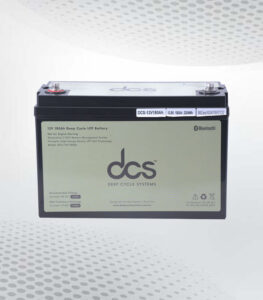Laser welding equipment has revolutionized the manufacturing and metalworking industries due to its precision, speed, and versatility. There are several types of laser welding machines, each suited to different applications and offering distinct benefits. In this article, we will explore the most common types of laser welding equipment—Fiber Laser Welding, CO2 Laser Welding, and Nd(Neodymium-Doped Yttrium Aluminum Garnet) Laser Welding—comparing their advantages, applications, and limitations.
1. Fiber Laser Welding Equipment
Overview:
Fiber laser welding machines are among the most advanced and popular types of laser welding equipment available today. They utilize optical fibers doped with rare-earth elements to amplify light, producing a high-power laser beam. Fiber lasers are known for their excellent beam quality and high efficiency, making them suitable for a wide range of materials and applications.
Applications:
- Automotive industry: Used for welding parts like gears, sensors, and batteries.
- Aerospace industry: Applied in welding lightweight materials such as aluminum and titanium.
- Medical devices: Used for precision welding of small, delicate components.
- Electronics: Suitable for micro-welding circuits and components.
Benefits:
- High precision and speed: Fiber lasers offer exceptional accuracy and can weld at high speeds, making them ideal for industrial production.
- Versatility: Fiber lasers can weld a variety of materials, including stainless steel, aluminum, copper, and titanium. They also work well with thin and thick materials alike.
- Minimal maintenance: Fiber lasers have a long lifespan and require less maintenance compared to other laser types, reducing downtime and operational costs.
- Energy efficiency: These lasers are more energy-efficient, converting electrical energy to laser light more effectively.
Limitations:
- High upfront cost: Fiber laser systems tend to be more expensive than other laser welding technologies, although the long-term savings in energy and maintenance often justify the investment.
- Less effective on certain plastics: Fiber lasers are primarily used for metals and may not be ideal for some plastic materials.
2. CO2 Laser Welding Equipment
Overview:
CO2 laser welding machines use a mixture of gases (carbon dioxide, nitrogen, and helium) to produce a laser beam in the infrared spectrum. These lasers are known for their ability to weld non-metallic materials, making them suitable for industries that work with plastics, wood, and glass.
Applications:
- Packaging industry: Used for welding plastics and polymers in product packaging.
- Textile industry: Applied in cutting and sealing synthetic fabrics.
- Glass and ceramics: Suitable for precision welding and cutting of glass and ceramic materials.
- Aerospace and automotive industries: Used in welding certain metal alloys, though less common for metals than fiber lasers.
Benefits:
- Good for non-metallic materials: CO2 lasers excel at welding non-metallic materials such as plastics, ceramics, and wood.
- Large working area: CO2 laser welding equipment can be used over a larger area, making it suitable for large-scale applications like sheet metal welding.
- Cost-effective: While not as efficient as fiber lasers, CO2 lasers are generally more affordable, making them attractive for companies on a tighter budget.
Limitations:
- Lower energy efficiency: CO2 lasers are less energy-efficient compared to fiber lasers, leading to higher operational costs over time.
- Complex maintenance: These machines often require more maintenance and have higher wear and tear on optical components.
- Limited material range: While CO2 lasers are excellent for non-metal materials, they are not as effective when it comes to welding metals, especially reflective metals like copper and aluminum.
3. NdLaser Welding Equipment
Overview:
Nd(Neodymium-Doped Yttrium Aluminum Garnet) lasers are solid-state lasers that emit light in the near-infrared spectrum. These lasers are versatile and can be used in both continuous-wave and pulsed modes, depending on the application. They are widely used for welding small, intricate parts.
Applications:
- Medical industry: Commonly used for welding medical devices and tools that require precision.
- Jewelry industry: Ideal for fine, delicate welds in metals like gold and silver.
- Automotive electronics: Used in micro-welding applications for sensors, circuits, and other electronic components.
Benefits:
- Pulsed operation for precision: Ndlasers can operate in a pulsed mode, allowing for precise control over heat input. This makes them suitable for welding small, delicate parts without damaging surrounding materials.
- Effective on reflective metals: Unlike CO2 lasers, Ndlasers work well on reflective metals such as gold, silver, and copper.
- Portable options: Ndlaser systems can be made portable, allowing for on-site repairs and mobile welding applications.
Limitations:
- Lower efficiency: Ndlasers are generally less energy-efficient than fiber lasers, leading to higher operating costs.
- Shorter lifespan: The components of Ndlasers, especially the flashlamps, tend to have shorter lifespans and need frequent replacement.
- Limited welding speed: These lasers tend to weld more slowly than fiber or CO2 lasers, making them less suitable for high-speed production lines.
Buy now online products: https://www.laserchina.com/products/
Conclusion
Each type of laser welding equipment offers unique advantages depending on the application and materials being used. Fiber laser welding machines are highly precise, fast, and efficient, making them ideal for a wide range of industrial applications. CO2 lasers are best for non-metallic materials, while Ndlasers are well-suited for micro-welding applications and working with reflective metals.
When choosing the right laser welding equipment, it’s important to consider the specific needs of the project, including the materials, the required precision, and the operational costs. Each type of laser welding system has its strengths and limitations, and understanding these will help you select the best tool for your application.


